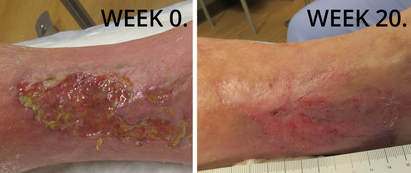
Atypical wounds are always a challenge and it is all the more rewarding to be able to report a successful outcome with Enluxtra. A patient with a rare cryoglobulinemia disorder has struggled with his painful wound for over a year. In just under 5 months with Enluxtra dressing and no debridement his wound completely closed.
Patient's background
A 60-year-old white male with a wound on the left medial ankle present for approximately 1 year, its condition deteriorating. Patient’s pain was so severe the wound could not be cleansed appropriately or debrided. Patient went to tertiary care settings for treatment options of the underlying vasculitic process, but did not pursue the definitive recommended treatment which was stem cell.
How the wound was treated before Enluxtra
The wound has been treated with a variety of products, including enzymatic debriding ointment, silver alginates, Vashe wet-to-dry, honey-based products, and steroid creams. An enzymatic debriding ointment utilized from the onset of the wound did not decrease pain or the non-viable tissue. No improvement of wound condition has been achieved. The patient was on Norco, Lyrica, Xanax, and both oral and intravenous prednisone for his pain.
What Enluxtra treatment has achieved
During Enluxtra treatment the patient experienced significant reduction of wound-related pain and by week 12 was able to completely stop prednisone. He did not have a single sharp debridement procedure in the entire course of treatment yet his wound steadily progressed towards healing and was fully re-epithelialized in just under 5 months.
Scroll down to view photos of wound progress and clinical notes.
Learn more about Enluxtra
Patient's background
A 60-year-old white male with a wound on the left medial ankle present for approximately 1 year, its condition deteriorating. Patient’s pain was so severe the wound could not be cleansed appropriately or debrided. Patient went to tertiary care settings for treatment options of the underlying vasculitic process, but did not pursue the definitive recommended treatment which was stem cell.
How the wound was treated before Enluxtra
The wound has been treated with a variety of products, including enzymatic debriding ointment, silver alginates, Vashe wet-to-dry, honey-based products, and steroid creams. An enzymatic debriding ointment utilized from the onset of the wound did not decrease pain or the non-viable tissue. No improvement of wound condition has been achieved. The patient was on Norco, Lyrica, Xanax, and both oral and intravenous prednisone for his pain.
What Enluxtra treatment has achieved
During Enluxtra treatment the patient experienced significant reduction of wound-related pain and by week 12 was able to completely stop prednisone. He did not have a single sharp debridement procedure in the entire course of treatment yet his wound steadily progressed towards healing and was fully re-epithelialized in just under 5 months.
Scroll down to view photos of wound progress and clinical notes.
Learn more about Enluxtra
- View Enluxtra case studies to see how it can heal the most difficult, stubborn wounds that resisted previous treatment with other products.
- Find out about Enluxtra difference.
- To buy Enluxtra dressings visit our online store, or explore other purchasing options.
- Order free samples available to medical professionals.
- Read other posts in our blog.
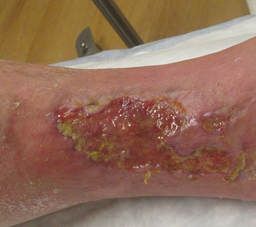
Week 0. At presentation the wound was severely painful and measured 16.1cm x 4cm x 0cm with copious drainage. The peri-wound was moist, edematous. The wound bed contained 50% slough, 25% red/pink granulation, and 25% epithelial tissue. Enluxtra dressing was started.
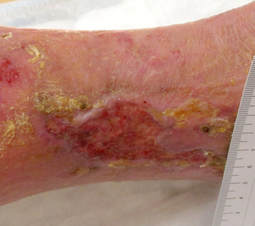
Week 7. By day 46 the wound size decreased to 11.1cm x 2.6cm x 0cm. Drainage was reduced, pain went down to 3 out of 10. The wound bed had no slough and contained 75% pink/red granulation and 25% epithelial tissue. The peri-wound was dry. Small secondary wounds have been uncovered and resolved within the next 2 weeks.
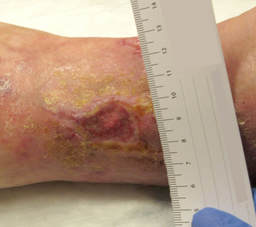
Week 12. By day 84 the wound size decreased drastically to 2.6cm x 1.3cm x 0.1cm. The drainage was moderate, pain 4 out of 10. The wound bed contained 25% slough, 50% pink/red granulation, and 25% epithelial tissue. The peri-wound was edematous. Despite a slight setback in wound condition, wound edges continued to contract.
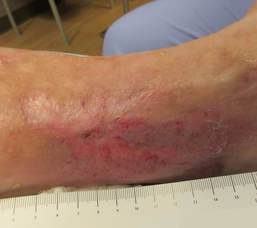
Week 20. The wound fully closed in just under 5 months. While the Enluxtra treatment was successful overall, daily dressing changes specifically requested by the patient were not necessary once the slough was removed. The wound would have benefited from less frequent dressing changes, which would have preserved homeostasis and allowed the wound to heal even faster.

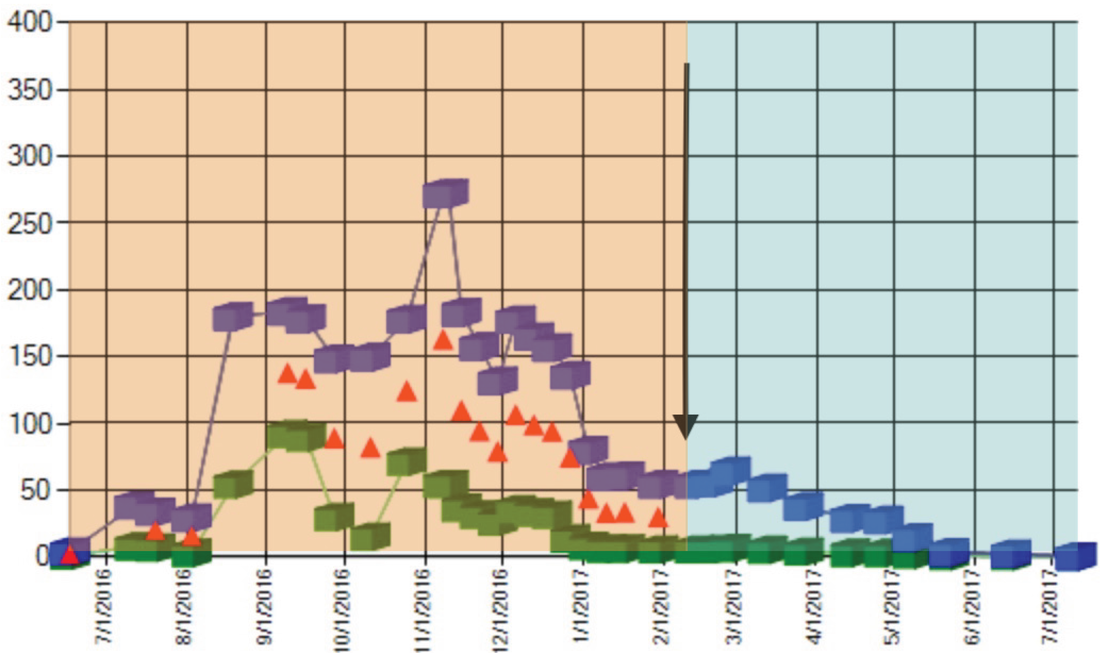
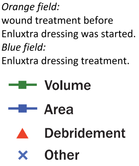
 RSS Feed
RSS Feed
